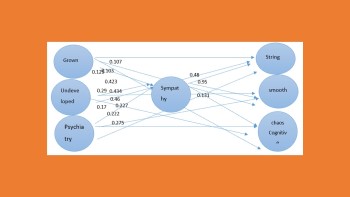Document Type : Original Research Article
Authors
1 Faculty of Psychology and social science Department of Psychology, Roudehen Branch, Islamic Azad University, Roudehen, Iran
2 Faculty of Psychology and social science Department of Psychology, Garmsar Branch, Islamic Azad University, Garmsar, Iran
Abstract
The aim of the present study was to investigate the relationship between defense mechanisms and empathy on anxiety biological discharge channels in students of Islamic Azad University, Roodehen Branch. The research method was descriptive-correlational and the statistical population of this study included 170 students of Islamic Azad University, Roodehen Branch. Which were selected as the sample size using the available random sampling method. For data collection, three questionnaires predicting the discharge paths of Farhadi et al., Andrews DSQ defense styles and Toronto empathy questionnaire were used by Nathan Spring et al. In order to analyze the data in this study, descriptive statistics have been used in the first part. In the inferential section, in order to test the research hypotheses and questions, the Kolmogorov-Smirnov test was used to measure the normality of the data and multiple regression was used to test the research hypotheses. The results showed that defense mechanisms (developed, immature, psychotic) have a significant effect on empathy and the channels of discharge of striated, smooth and chaotic anxiety. Also, empathy has no significant effect on the discharge channel of striated, smooth and cognitive anxiety.
Graphical Abstract
Keywords
Main Subjects
OPEN ACCESS
©2024 The author(s). This article is licensed under a Creative Commons Attribution 4.0 International License, which permits use, sharing, adaptation, distribution and reproduction in any medium or format, as long as you give appropriate credit to the original author(s) and the source, provide a link to the Creative Commons license, and indicate if changes were made. The images or other third party material in this article are included in the article’s Creative Commons license, unless indicated otherwise in a credit line to the material. If material is not included in the article’s Creative Commons license and your intended use is not permitted by statutory regulation or exceeds the permitted use, you will need to obtain permission directly from the copyright holder. To view a copy of this license, visit: http://creativecommons.org/licenses/by/4.0/
PUBLISHER NOTE
Sami Publishing Company remains neutral concerning jurisdictional claims in published maps and institutional affiliations.
CURRENT PUBLISHER
Sami Publishing Company


